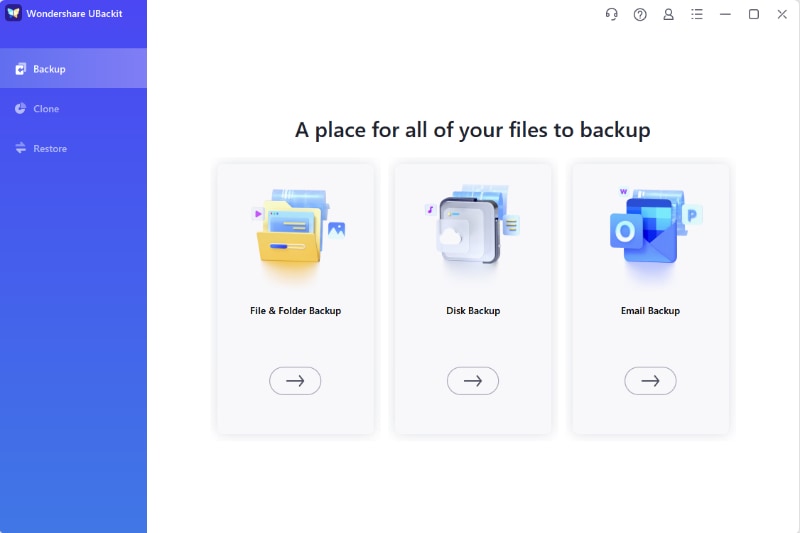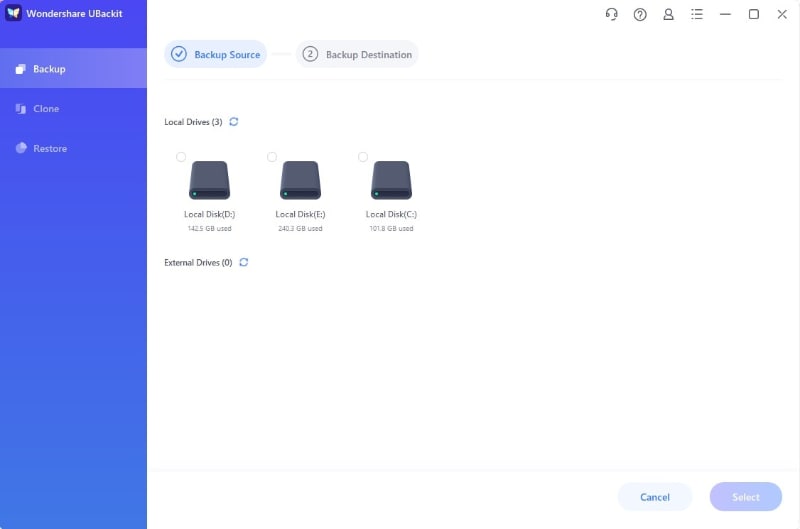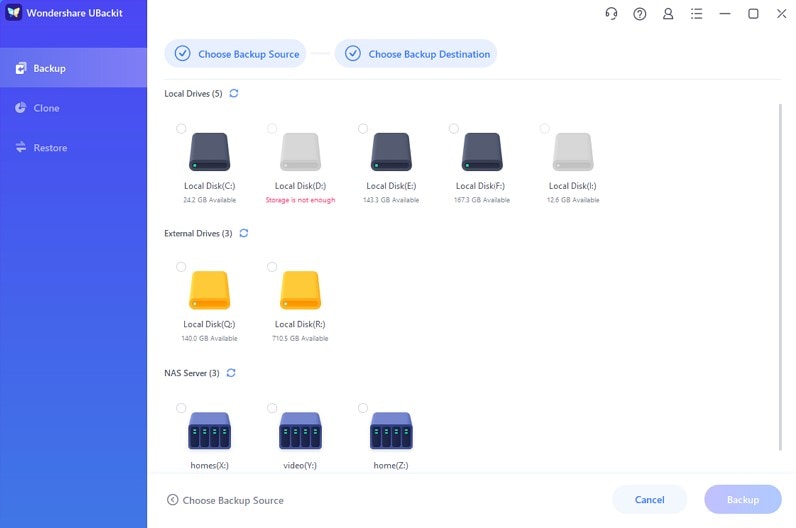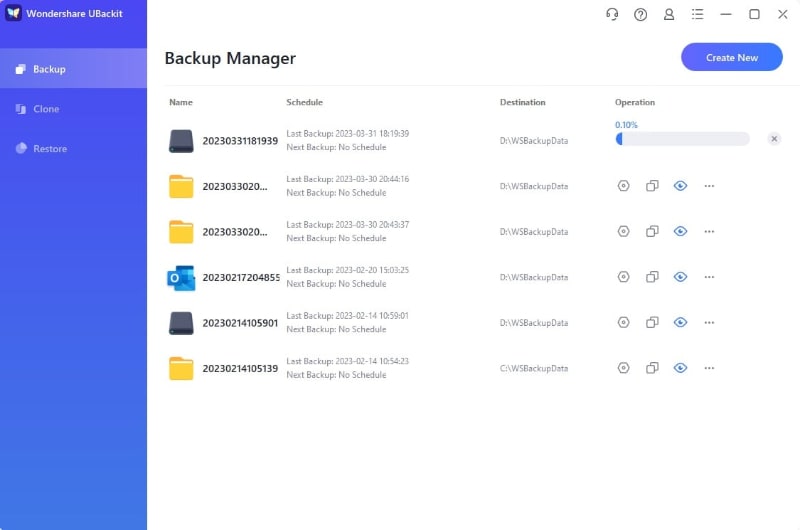How to Clone MBR to GPT Disk
Q: How to clone MBR to GPT disk?
"Recently, I bought a new 6 TB hard disk. Now, I want to upgrade to it from my 2 TB hard disk. However, the current drive is formatted in MBR, and I want the 6 TB in GPT. So, is there any solution to clone MBR to GPT disk?"
Most of us who use Windows are familiar with the GPT and MBR, which are two methods of partitioning in the OS. Likewise, we also know that MBR comes with some limitations. Thus, we often prefer the GPT method to use our disk space to its full capacity.
For example, when you feel that your current hard drive is getting full or dying, then perhaps you prefer to either replace it with a new one or upgrade it to a larger one. Nowadays, hard drives have a large capacity. However, the MBR disk will support only 2 TB. Therefore, to ensure you make full use of the available disk space, you can prefer to initialize larger disks to GPT. In some particular cases, the user's new hard disk has the GPT partition style, while the old hard drive might be a system disk with MBR.
As a result, many users solve this issue by cloning MBR to GPT. So, in this informative article, we will explain the concepts of GPT and MBR, and also demonstrate the best method to clone MBR to a GPT disk.
Part 1: Understanding the MBR Disk and GPT Disk
On Windows, when you try to set up a new disk, you often get a question asking you whether you wish to go with a GPT or MBR. What are these partitions all about on Windows?
Well, a partition arrangement is something that describes the structure of information on the partition. It will tell you where do the partitions start and end. In the case of bootable partition, it also provides you with the code applied in the beginning. In short, if you have ever handled the formatting or partitioning of a disk, then you most likely know the GPT and MBR. If you don't, then let's find out more about them.
1. Knowing the MBR Disk
Let's start with the full form of MBR. Well, it is a Master Boot Record that implies an old model to maintain the hard disk partitions. It uses a standard BIOS and supports a disk size of around 2 TB. In other words, it cannot support a disk space of more than 2 TB. Thus, if the size of your hard disk is more than 2 TB, then the additional space beyond 2 TB will not be utilized.
Moreover, it can support only four primary partitions, making it quite inconvenient if you want to create more partitions for storing data. Lastly, the MBR disk can work with both 32-bit and 64-bit operating systems. Learn more about what is MBR.
2. Knowing the GPT Disk
GPT is another type of disk that stands for the GUID Partition Table. It is the newest model for the arrangement of the hard disk's partition table. Moreover, it uses GUID, i.e., globally unique identifiers that help define the partition. Being part of the UEFI standard, you can use GPT to replace the MBR. Besides, GPT can use the primary as well as backup partition structures that you can respectively find at the start and end of the disk. Learn more about what is GPT.
3. MBR VS. GPT
Before you decide to clone the MBR disk to GPT, you must have basic knowledge of the differences between both of them.
MBR and GPT both are two separate styles of partition. The hard drives that use GPT and MBR partitions are known as GPT disks and MBR disks, respectively. However, GPT is much more advantageous than MBR. Besides, there are a few more differences that we will discuss in the next part.
- Both MBR and GPT Were Originated in Different Time
IBM PC DOS 2.0 introduced the MBR partition style in March 1983. However, it is still in use. Likewise, the GPT partition style started in the late 1990s. If we compare the popularity, then there is no doubt that GPT is more popular than MBR.
- MBR and GPT Have Separate Structures
Firstly, MBR contains three parts, which include the master boot code, disk signature, and the disk's partition table. Here, the partition table supports a maximum of four entries for the primary partitions.
Similarly, GPT consists of a protective MBR. It restricts MBR-based disk utilities from possible misrecognition and overwriting of GPT disks. Moreover, it can support up to 128 partition entries.
- Both Support Disk Capacity and Partition Amounts Differently
As we know, the MBR partition table can support only four primary partition entries. So, on your MBR disk, you can only create four primary partitions. In case if you want to have more than four partitions, then you will need to make an extended partition.
Conversely, if you consider a theoretical explanation, then the GPT disk allows you to create an extensive number of partitions. However, the implementation of Windows limits it to 128 partitions.
- Difference in Compatibility
Almost all modern operating systems in Windows use GPT disks for storing data. However, the GPT disk is only available in 64-bit versions. Likewise, Windows XP of 32-bit supports protective MBR.
- Both Have Different Boot Mode
If you want to boot your Windows with an MBR disk, then the motherboard must support Legacy boot only. Besides, if you want to use a GPT disk for installing Windows in Legacy mode, then you might receive an error. Also, in many cases, Windows refuse to start if the user has used Legacy boot mode to install it on the GPT disk.
But, if the motherboard only supports UEFI boot mode, then you can start Windows with the GPT disk.
Dig deeper into MBR vs GPT.
Part 2: What Is the Need of Cloning MBR to GPT Disk?
Both GPT and MBR are widely accepted partitions disks. However, many users still prefer to use GPT over MBR. They do it because of the following obvious reasons.
- GPT Is Great for Creating More Than 4 Partitions
You already know that an MBR disk can support only four primary partitions, whereas a GPT disk allows up to 128 primary partitions. So, GPT seems to be an excellent option if you don't want to face any limitations on creating partitions.
- GPT Is More Suitable if Your Hard Disk Size Is More Than 2 TB
If you initialize your 512B sector hard disk to MBR, then you can only utilize 2 TB space. Therefore, it would be an excellent option for you to format that disk to GPT.
- GPT Offers More Security
Well, for redundancy, GPT disks make use of primary and backup partition tables. Likewise, it uses CRC32 fields to offer you the best partition data structure integrity. Thus, if you seek data security, then you must go with a GPT partitioning scheme.
- GPT is the best option if your computer supports UEFI boot
If you compare the booting from MBR with that of GPT, then you will notice that GPT is considerably faster and steady to boot Windows. It also improves the performance of your computer.
Part 3: How to Quickly Clone a Hard Drive from MBR to GPT Disk?
Now that you are familiar with the concept of GPT disk and MBR disk let's check out the best method for cloning your hard drive from MBR disk to GPT disk.
You can use Wondershare UBackit, which offers the best disk cloning program for Windows. With this software, you can clone the hard drive from the MBR to the GPT disk. Moreover, you don't need to convert the target disk. Below are the steps to clone your hard drive from MBR to GPT disk with the help of Wondershare UBackit.
Step 1 Launch And Install Wondershare UBackit

Step 2 Select A MBR Disk to Clone
From the list of the available drives, just choose the MBR drive to back up and click on the “Select” button.

Step 3 Select GPT Disk as Backup Destination
It is advised that you choose a brand new GPT external hard drive to store the backup data and settings. Also, ensure that the storage space is big enough to load the whole disk.

Step 4 Complete the Cloning Process
After clicking on the “Backup” button, you can just sit back, and wait for a while. The application will display the progress of the disk backup process on the screen. Once the process completes, UBackit will notify you.

Conclusion
You may want to clone your MBR to get the disk for a variety of reasons. If you are looking to create more than four partitions, then the option of GPT disk is indispensable. Besides, there are lots of benefits of using GPT. Remember, cloning MBR to GPT disk is more comfortable and straightforward. All you need is a safe, reliable, and robust disk cloning tool to do the task.
In this case, Wondershare UBackit seems to be an excellent choice. It can do a lot of extra tasks than just cloning your disks. Whether you want to clone your partition or system, the software helps you do that with a few clicks.
You may also like:
How To Convert MBR to GPT on Linux
Top 4 Free MBR to GPT Converter
How To Convert MBR to GPT Using CMD
Data Backup Services
- Computer Backup
- Hard Drive Backup
- Mac Backup
- Cloud Backup











Amy Dennis
staff Editor